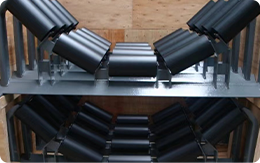 Afrikaans
Afrikaans  Albanian
Albanian  Amharic
Amharic  Arabic
Arabic  Armenian
Armenian  Azerbaijani
Azerbaijani  Basque
Basque  Belarusian
Belarusian  Bengali
Bengali  Bosnian
Bosnian  Bulgarian
Bulgarian  Catalan
Catalan  Cebuano
Cebuano  Corsican
Corsican  Croatian
Croatian  Czech
Czech  Danish
Danish  Dutch
Dutch  English
English  Esperanto
Esperanto  Estonian
Estonian  Finnish
Finnish  French
French  Frisian
Frisian  Galician
Galician  Georgian
Georgian  German
German  Greek
Greek  Gujarati
Gujarati  Haitian Creole
Haitian Creole  hausa
hausa  hawaiian
hawaiian  Hebrew
Hebrew  Hindi
Hindi  Miao
Miao  Hungarian
Hungarian  Icelandic
Icelandic  igbo
igbo  Indonesian
Indonesian  irish
irish  Italian
Italian  Japanese
Japanese  Javanese
Javanese  Kannada
Kannada  kazakh
kazakh  Khmer
Khmer  Rwandese
Rwandese  Korean
Korean  Kurdish
Kurdish  Kyrgyz
Kyrgyz  Lao
Lao  Latin
Latin  Latvian
Latvian  Lithuanian
Lithuanian  Luxembourgish
Luxembourgish  Macedonian
Macedonian  Malgashi
Malgashi  Malay
Malay  Malayalam
Malayalam  Maltese
Maltese  Maori
Maori  Marathi
Marathi  Mongolian
Mongolian  Myanmar
Myanmar  Nepali
Nepali  Norwegian
Norwegian  Norwegian
Norwegian  Occitan
Occitan  Pashto
Pashto  Persian
Persian  Polish
Polish  Portuguese
Portuguese  Punjabi
Punjabi  Romanian
Romanian  Russian
Russian  Samoan
Samoan  Scottish Gaelic
Scottish Gaelic  Serbian
Serbian  Sesotho
Sesotho  Shona
Shona  Sindhi
Sindhi  Sinhala
Sinhala  Slovak
Slovak  Slovenian
Slovenian  Somali
Somali  Spanish
Spanish  Sundanese
Sundanese  Swahili
Swahili  Swedish
Swedish  Tagalog
Tagalog  Tajik
Tajik  Tamil
Tamil  Tatar
Tatar  Telugu
Telugu  Thai
Thai  Turkish
Turkish  Turkmen
Turkmen  Ukrainian
Ukrainian  Urdu
Urdu  Uighur
Uighur  Uzbek
Uzbek  Vietnamese
Vietnamese  Welsh
Welsh  Bantu
Bantu  Yiddish
Yiddish  Yoruba
Yoruba  Zulu
Zulu Key Elements of a Belt Conveyor System Explained
Components of a Belt Conveyor System
Belt conveyors are ubiquitous in various industrial applications, ranging from manufacturing to logistics. They serve as a critical mechanism for material handling, transporting products and components efficiently from one point to another. Understanding the components of a belt conveyor system is essential for ensuring its optimal performance, maintenance, and longevity.
1. Belt
The belt itself is the most vital component of a conveyor system. Usually made from rubber, fabric, or a combination of both, the belt provides the surface on which materials are transported. The choice of belt material depends on several factors, including the type of materials being handled, environmental conditions, and the type of industry. For instance, rubber belts are frequently utilized for their durability and flexibility, while plastic belts may be preferred in food processing due to their hygienic properties.
2. Pulleys
Pulleys are cylindrical units that facilitate the movement of the belt. There are two main types of pulleys drive pulleys and idler pulleys. The drive pulley, powered by a motor, provides the necessary force to move the belt. In contrast, idler pulleys are used to support the belt and maintain its tension. The arrangement and design of pulleys directly impact the efficiency of the conveyor system, influencing factors such as speed and load-bearing capabilities.
3. Motor
The motor is the powerhouse of the conveyor system. Typically positioned at one end of the conveyor, it drives the pulley to initiate belt movement. Motors can vary in type, such as AC or DC motors, depending on the specific requirements of the operation. The size and power of the motor must match the load and speed requirements of the conveyor. Moreover, variable frequency drives (VFDs) can be employed to control motor speed, allowing for more versatile and efficient operation.
4. Framework
components of belt conveyor system

The framework, also known as the conveyor structure, is the backbone of the conveyor system. It supports the entire assembly, including the belt, pulleys, and motor. Made from steel or aluminum, the framework must be robust enough to withstand the weight of the materials being transported and any external forces. Its design often includes adjustable legs and supports that can accommodate different heights and configurations.
5. Tensioning System
A tensioning system is crucial for maintaining the proper tension on the belt, which is vital for smooth operation. A belt that is too loose can slip off the pulleys, while excessive tension can lead to premature wear or damage. Common tensioning mechanisms include screw-type adjusters, weight-based systems, and hydraulic tensioners, each offering different benefits depending on the application.
6. Conveyor Controls
Modern conveyor systems often incorporate advanced control systems, which enable automation and better operational management. These controls can include simple on/off switches, as well as complex programmable logic controllers (PLCs) that integrate with other equipment in the facility. Through these systems, operators can monitor the conveyor's performance, making adjustments as necessary to maximize efficiency.
7. Safety Features
Given the potential hazards involved in conveyor systems, safety features are an essential component. Typical safety elements include emergency stop buttons, pull cords, and safety guards around moving parts. Proper training for operators and regular maintenance checks are also critical to ensure the safety of all personnel in the area.
Conclusion
A belt conveyor system is a complex yet efficient method for material handling across various industries. Each component plays a significant role in ensuring that the conveyor operates smoothly and effectively. Understanding these components not only helps in selecting the right conveyor system for a specific application but also aids in maintaining and troubleshooting existing systems. As technology continues to advance, we can expect further improvements in conveyor design, leading to enhanced efficiency and safety in material handling operations.
-
Revolutionizing Conveyor Reliability with Advanced Rubber Lagging PulleysNewsJul.22,2025
-
Powering Precision and Durability with Expert Manufacturers of Conveyor ComponentsNewsJul.22,2025
-
Optimizing Conveyor Systems with Advanced Conveyor AccessoriesNewsJul.22,2025
-
Maximize Conveyor Efficiency with Quality Conveyor Idler PulleysNewsJul.22,2025
-
Future-Proof Your Conveyor System with High-Performance Polyurethane RollerNewsJul.22,2025
-
Driving Efficiency Forward with Quality Idlers and RollersNewsJul.22,2025





























